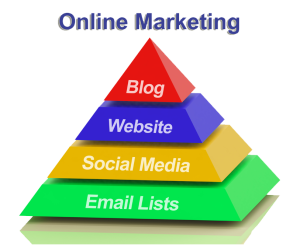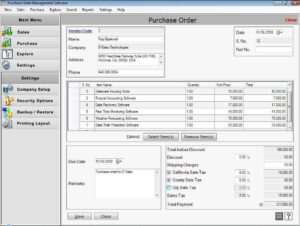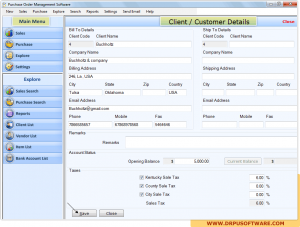Key Points for Accessibility

Several website pages just give lip service to accessibility, meaning that the issue remains spread out. Internet site graphic designers need to be reminded of the basic handiness specifications and exactly how it will influence their design and style for the better.
Accessibility is often a buzz word in website design nevertheless the fact is that, more frequently than not, it remains only that – a buzz word. Reputable, web designers may possibly tell you that they would want to make their design as being accessible as possible, and yet if you look at the total number of websites that are genuinely accessible to ALL web users, then you will certainly realise just how much web-site designers really just concentrate on the majority of this market. As with numerous circumstances, people with handicaps get the short end of the stick.
In terms of internet marketing, pouring a large amount of hard work and resources on for less than 10% to 20% of the market, might sound respectable. After all the exchange interest rates will surely be still lower than that. The truth of the matter nevertheless is that the legal requirements clearly says that web sites have to be readily available to everyone, which includes consumers with handicaps. According to the Disability Discrimination Act (DDA), which has been around for more than a decade, companies really should “adopt satisfactory actions to improve a process which renders it unreasonably tough for handicapped customers to make use of its products and services. Moreover it declares that to make sure of accessibility an example of reasonable service that they should supply may incorporate “accessible web sites”. Just by dismissing legal requirements, internet site owners may not be just passing up an opportunity to access an additional 10% to 20% of the market but also taking a chance on being prosecuted.
To make sure you offer an accessible web site, a great place to begin is clearly the W3C’s Web Accessibility Initiative (WAI) site. Considering it tackles the matter particularly exhaustively, We would recommend that you really get going by going over their top priority checkpoints, to ascertain if your current website at least sticks to or utilises vast majority of regulations.
Step 1. The most effective priorities regarding website convenience are highlighted below: step one. Offering a text equivalent for non-text features. This would be to ensure that screen readers can read those elements and report to visually impaired people whatever is in that section of the internet site. We usually offer the text equivalent simply by with the help of Alt tags or use the “longdesc”.
2. Ensuring that colorful information are likewise easily available free of coloration. This is for the colour blind.
Step three. Undertaking changes within the natural language of a document’s text and any text equivalents well laid out. As an example, if you will probably be utilizing captions it should really be crystal-clear that it is a caption pertaining to an image without being a segment of the paragraph, using this method things will make good sense whenever read by way of a screen reader.
4. Develop things style sheet independent. The content should be legible even in the event it’s read without the style sheet. This is a typical drawback, even when it comes to simple rendering of a website employing style sheets.
Five. Ensure that there’s an equivalent written content available for dynamic content. Dynamic content, like flashing text, is regarded as a considerable problem because screen readers cannot read movement text. Similarly, those with flexibility difficulties could possibly find it in reality tricky to follow moving text. And finally, but the most hazardous difficulty, is that certain wavelengths may lead to fits for users who have got photosensitive epilepsy. To guarantee this does not happen you’ll be able to either give a static equivalent of the dynamic content or empower consumers to regulate the flickering.
Six. Remember to keep it sweet and simple. Staying concise and using plain language can make things simpler for All Concerned, which includes individuals with reading disabilities and frequent users who dislike having to go through useless nonsense. The above recommendations are only the simple guidelines provided by the W3C, if you are using imagery, tables, frames, etc, there are actually even a lot more tips and hints that you should follow. In the end, as a web designer you will notice that sticking to these accessibility recommendations will not only greatly influence consumers with disabilities, but quite possibly help you reconsider your overall process to designing a web site. It may be a lot more work nonetheless will result in a less complicated and all in all more user-friendly website.
Minimalism and White Space: White space is really a very necessary part of website design. Its frequently forgotten by consumers however is an upcoming trend website designers can not afford to not recognize. Once you take on white space accordingly, your web site designs will undoubtedly boost noticeably.
Minimalism and white space is really a fast becoming a sensation throughout web design. Google is maybe the poster child for minimalism and white space, and judging just from their achievements, then we can conclude that it really is the way for you to go. Prior to the advantageous purposes and effects of white spaces are highlighted, let me just explain briefly what minimalism and white space is, and how they correspond with each other. White space is just the area or region between the elements of a web site (i.e. the region between the text, images, footers, etc.).
Minimalism, in website design, is a idea wherein the type is being used as the prime design element, which means that imagery, texture, and coloration takes the back stage. Owing to the way type is given main focus in a minimalist design, extra white space is generally established.
The key advantage of a minimalist design, when executed the right way, is that acquiring all the white space causes less visual clutter. This in turn aids the user in terms of focusing on the really important aspects of the web content seeing that pointless elements are not there to distract them. This suggests that that there’s an increase in the client’s ability to process and retain the details on the webpage. The explanation for this is that since there’s less visual stimulating elements, they are able to concentrate on processing the necessary information instead of subliminally process other extraneous details at the very same time. What’s more, it also obviously points out to the user what they can get and do on that page. For example, in Google’s circumstance, it’s obvious that the customer needs only to type their search string inside the box and then click the button to obtain their look up results. In other websites, it might help in conversions mainly because the subscribe or buy button will be less difficult to find.
As well as it’s effects on the concentration, a minimalist design likewise invariably result in a far more aesthetically pleasing web page. Although aesthetics is definitely truly highly subjective, generally, utilizing more white space delivers ease-of-use and elegance. Note too that aesthetics is very key in web design mainly because it significantly impacts consumer satisfaction. The strange factor is that as consumer satisfaction rises, their awareness of the usability of a internet site also increases, whether this is a primary response to the minimalist design or merely their enthusiasm to discover how to navigate the web site a lot more effectively is not always widely known, but whats important is that it provides a positive effect.
In spite of all of the beneficial factors that a minimalist design will bring it’s still essential to bear in mind that it is the appropriate usage of white space that makes things a lot more efficient. Employing a minimalist design and having lots of white space does not routinely mean a great web site design. Like in many things, there’s certainly no clear cut solution. You need to consider all of the individual article content and data that really need to be on a web page to view how you’ll be able to benefit from white space efficiently.
Amongst the important elements to contemplate when choosing to go minimalist or not is the desire feel of the website. As pointed out above, a minimalist design ordinarily creates a far more elegant feel. As we know, elegance is also almost equated with luxury as well as expensiveness. Hence, its quite clear that if your business is advertising discount furniture in Peterborough, internet site design of every page should have a visual impact that shouts affordable rather than costly. This means using a lot of big colored print styles, sales signs, cut price tags, and considerably less white space. If a person on the lookout for inexpensive home furniture lands on a page with just a single living room sofa and the name of the store on it, it is not unlikely that that person may think that costs will not be in their range and simply go to a further web site.
Yet another factor to think about when experimenting with white space is the concept of active and passive white space. Passive white space is utilized purely to improve readability of text. Having far too little white space between characters and lines, its just to difficult to read. Active white space, on the other hand, takes it a step further by utilising the white space to attract attention to a precise detail on the screen. For instance, by adding just a bit more white space than usual between a paragraph sandwiched linking 2 others and emphasizing that paragraph, you automatically draw focus to that line so that even when visitors might not end up reading through all of the text, they would at least read that important line first. The very same is true for adding white space around logos and clickable elements.
Click here for additional info www.firthdesign.co.uk
The essential factor in implementing white space is that you need to continue to keep on practising to ensure that deciding whether more or less white space is necessary for each and every online page. In the end, it will come a lot less complicated to you and your web design will stand out thanks to that little some thing consumers don’t realize they actually pay attention to – white space.






